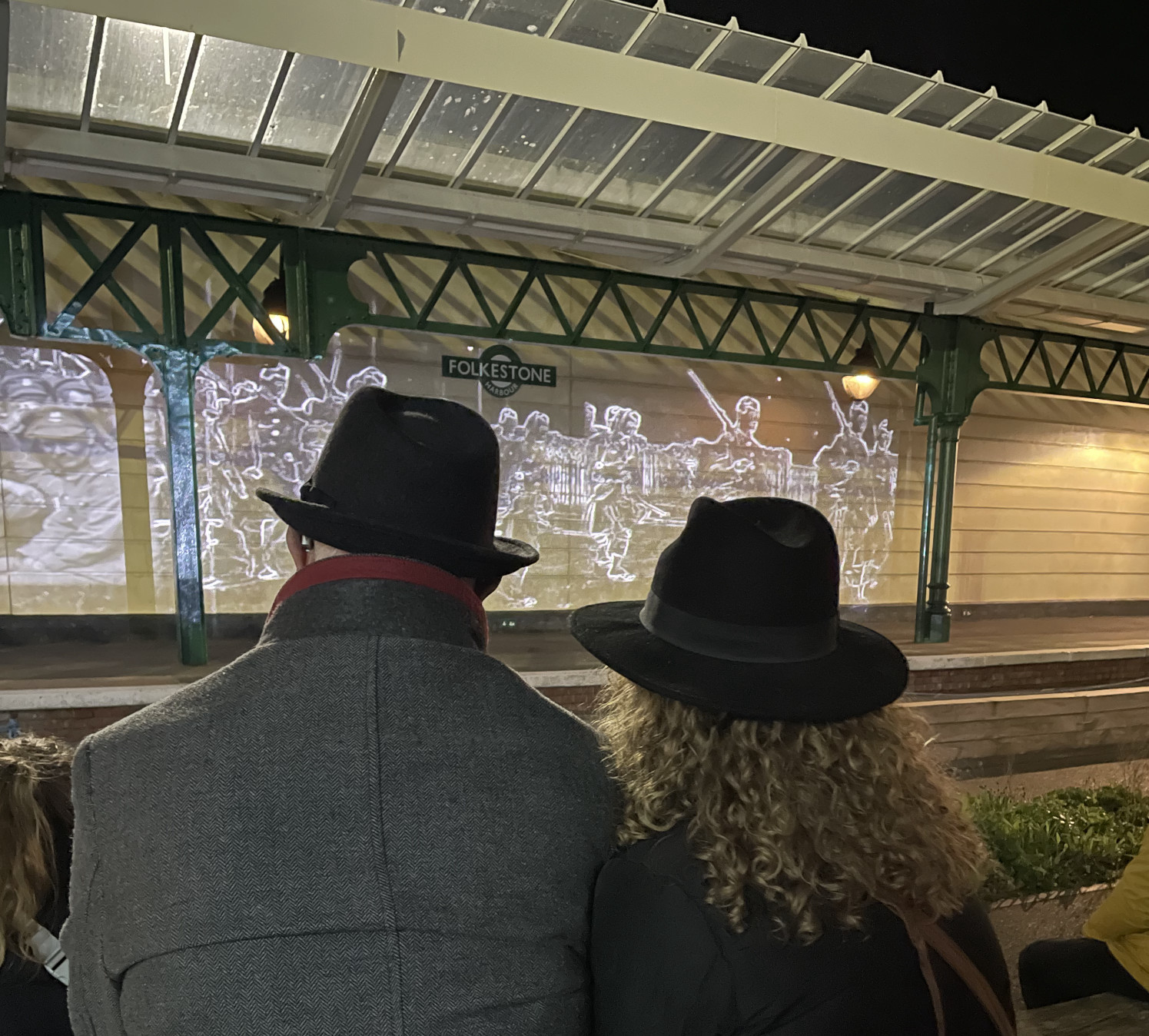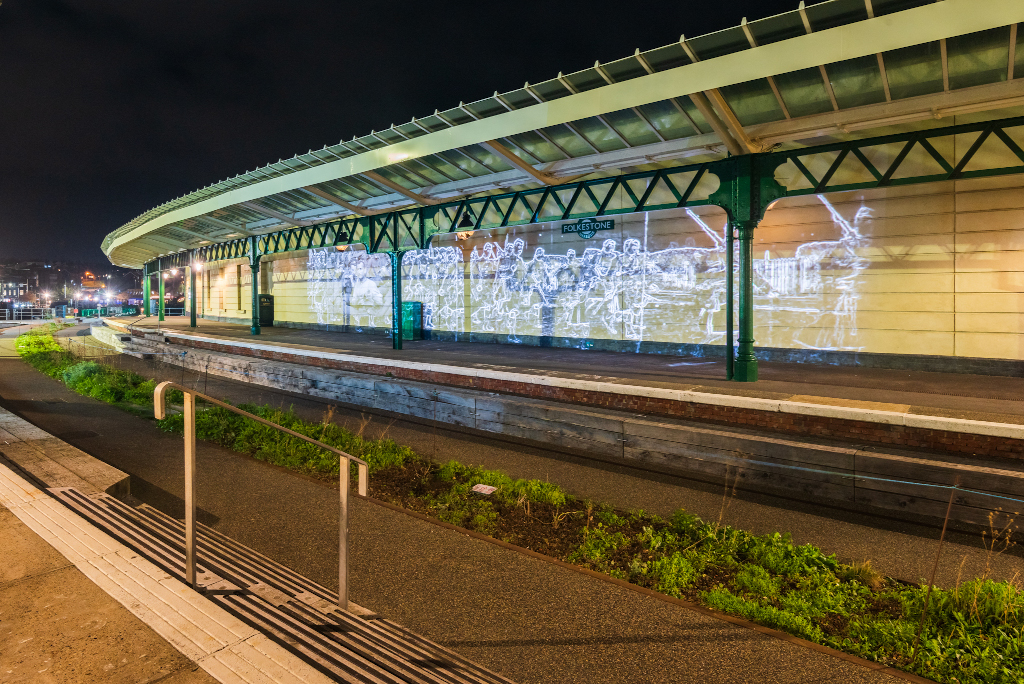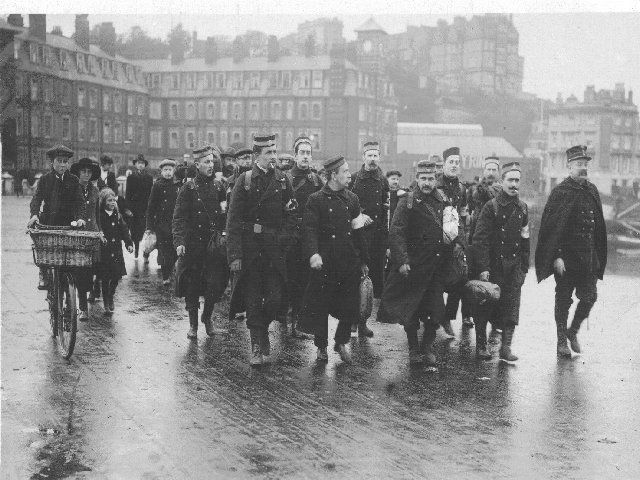Live
walking with ghosts – folkestone’s history remembered
Remembrance Day is on 11th November and will be marked at Folkestone Harbour with the Walking With Ghosts project. This is from the University Of Kent and focuses on the legacy of World War 1. In their first year in November 2022 the group showed film footage of soldiers walking along Folkestone Harbour Station platform. The footage ran for 84 hours which is the time it would take for all the war dead of the Empire from WW1 to march past the Cenotaph in London, 4 abreast. In 2023, from 3pm to 11pm on 11th and 12th November, the team, lead by Professor Helen Brooks, will show the living artwork again with some additions to the exhibition. Folkelife spoke to Prof Brooks about the project.
“I am Professor of Cultural and Creative History and along with my colleague Mark Connelly, who’s Professor of British History, we’ve created Walking With Ghosts. It’s part of the Imperial War Museums 14-18 Now legacy from WW1. Mark and I have been working on a project called Gateways to the First World War since 2014. The thing that really excited us was this idea of creative engagement with heritage. How do we tell stories from history that are grounded in rigorous academic research but expressed and told in a way that’s interesting, exciting and captures the imagination?
“Engaging different ages, different backgrounds and interests is incredibly hard but I’m a theatre person by background and I have always loved discovering history through performance. When we saw the funding for this it seemed the perfect idea to create this performative installation. Our work brings alive the place, the Folkestone Harbour Station, where so many soldiers in WW1 left Britain to go to war.”
ghosts on the platform
“We couldn’t have imagined just how much of a success last year’s event was. So many people came down – I ran out of programmes in the first day! Not only was there the Imperial War Museum’s footage of the soldiers to watch, but there was poetry, music and readings to watch and listen to as well. The ghostly images of the soldiers was just that – especially if you came during the day when they were very hard to see. This year we’re running the footage from 3.30pm to 11pm so that you can watch the men emerging as the sun goes down.
“This station is the very place that over 100 years ago, these men would have walked through on their way to France and beyond to fight. People also arrived here too; the influx of refugees from Belgium and beyond, fleeing from war.
“The readings are extracts from letters, diaries and poems and all this is accompanied by a very powerful soundtrack from Tom Robson. This year there will also be a community element. Roger Joyce is coordinating groups such as Shepway HEART Forum, Go Folkestone, New Folkestone Society, Purl Queens and some re-enactors to add to the experience.”
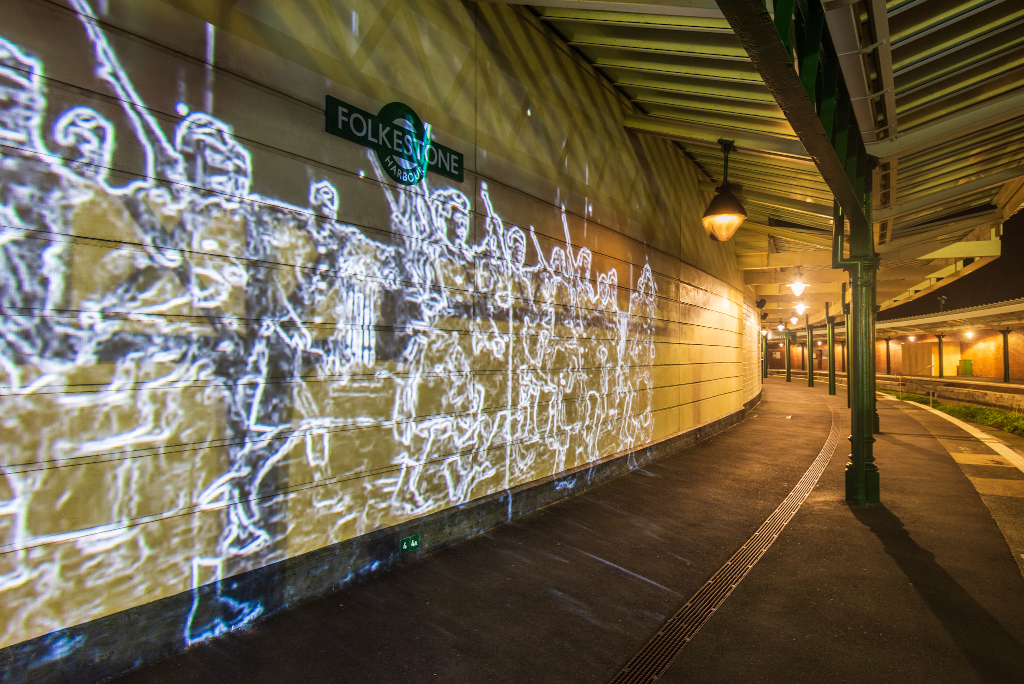
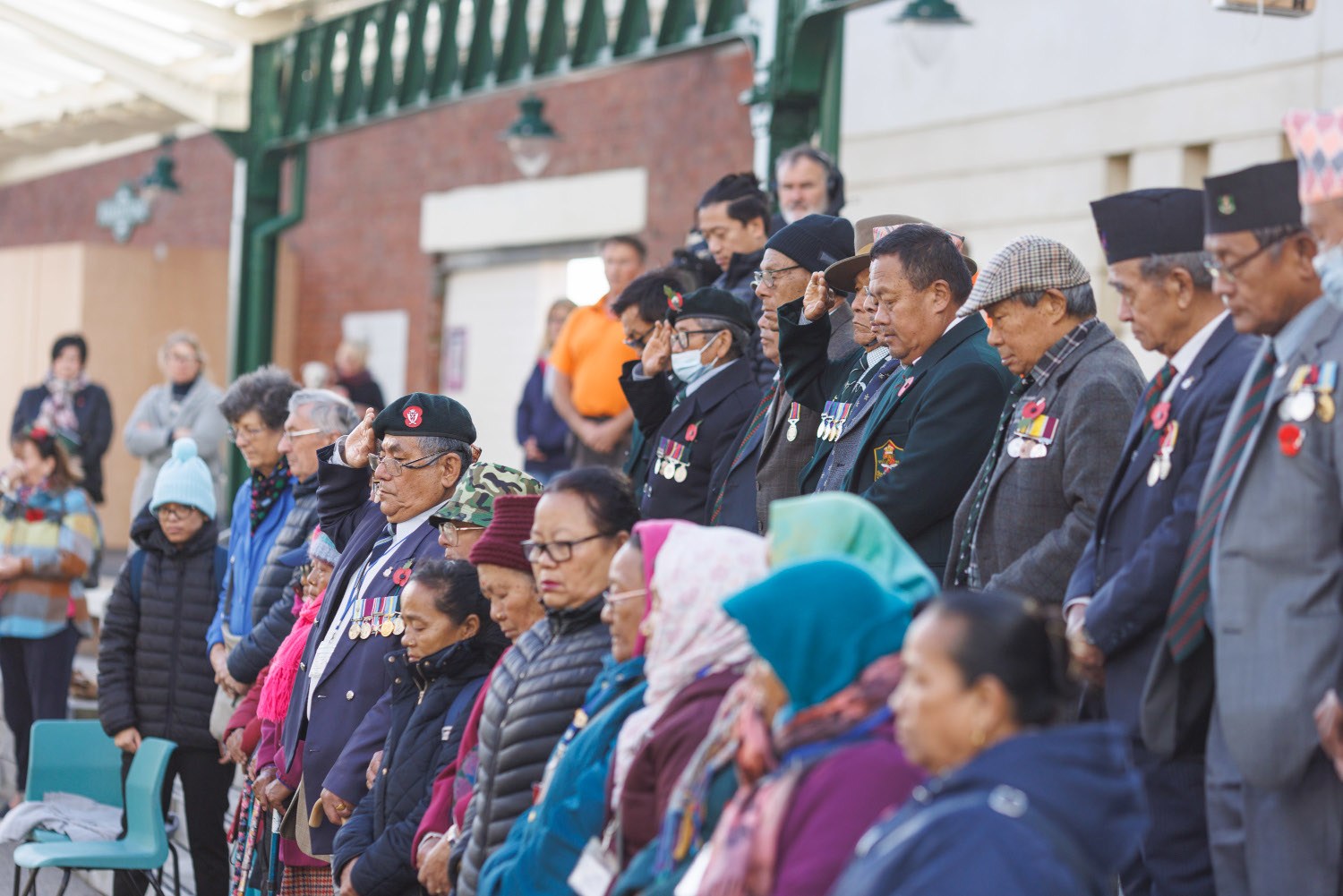
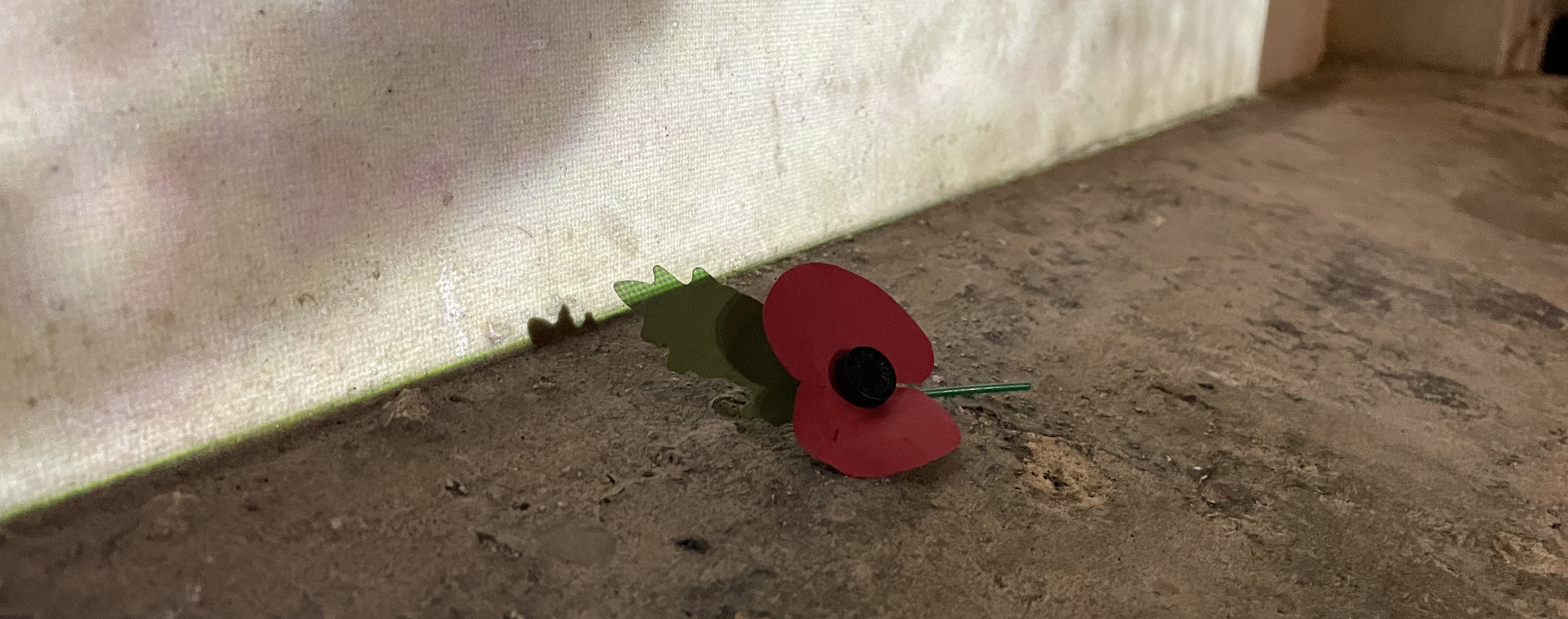


Folkestone’s act of REMEMBRANCE
“This is now the second year and we hope the event will become an annual one. It’s going to be interesting seeing how it grows into an act of remembrance for Folkestone. The community groups involved this year have played significant roles in keeping this part of our living heritage.
“So many people missed it last year, or came when you couldn’t see anything during the day. It’s a different experience from daytime to nighttime and it was fun to watch the children trying to spot the men marching. This year, you can experience that difference between the day and nighttime by coming at 3.30pm when we start projecting the men on the walls of Folkestone Harbour Station. By 4.30pm you should be able to see them, and as it gets darker still the atmosphere is quite different.”
reflective
“People seemed to instinctively watch, sitting or standing, with reverence and respect for what they were seeing. Something that struck me was that spiritual commemorative aspect that emerged out of the space. We had turned something that is a thoroughfare, where people run, walking their dogs and strolling along, into a space with a reflective quality that we hadn’t anticipated.
“It was interesting to watch because you could hear people in the distance coming out of the pub and being a bit rowdy. But as they came up you saw them stopping and looking to see what was going on. Some walked quietly through and others stopped to take more in. People left poppies and crosses as well; we gathered those and have kept them in an archive box.”
community events
“There will be a reopening of the Mole Cafe for this weekend. This was run by a group of volunteers to give the soldiers a last cup of tea before they left for the continent. During the run-up to the centenary commemorations a team of women from Folkestone reinacted the tea station. They’re ready to do it again for one weekend only!
“This event is an interactive artwork which encourages people to think about some of these questions on the impact of war on our society at the moment, and the legacy of war too. There was a real sense, both in the comments that people were putting in the the visitor book and in the way that they were using the space as a commemorative place, that this serves a function that we hadn’t anticipated, and it was brilliant.”
picture frames
“You will see the Imperial War Museum footage of men marching off to war on one side of the platform. On the other there are three indented windows that we’re calling Picture Frames. In these you will be able to see a picture book of curated photographs. These are not just from WW1, and historic Folkestone, but from other conflicts right up to the war in Afghanistan. The photos largely come from the Imperial War Museums collection and our Gateways collection, with thanks also to Step Short collection in Folkestone.”
six movements
“There are six defined movements which shape the soundscape and images you see. Each movement is accompanied by a British Sign Language interpreter Jason Tenant, with the words provided as subtitles. He’s dressed as an East Kent Buffs WW1 soldier. The wonderful Jessica Hynes reads a Siegfried Sassoon poem in its entirety called Picture Show. He wrote it referring to the silent black and white films that he saw of the war. It speaks to the idea of the ghost being captured in film.
“There are letters and diary entries to hear, including from Wilfred Owen, from the men arriving at Folkestone Harbour. The music you’ll hear mirrors that sense of anticipation, and even excitement, and there are incredibly poignant bits too of mothers saying goodbye and so on.
“Of the six movements there’s one called Displacement where we focus on those arriving in Folkestone from war-torn areas, and that couldn’t be more apt today. You’ll hear from Belgium refugees in 1914 and from a Ukranian, one of the first to arrive here in March 2022, read by a Ukranian actress who has also fled from the war there. There’s also a gorgeous poem by American/Iraqi poet Dunya Mikhail who is the first female Iraqi poet to have her work translated into English. She writes a lot about the refugee experience and war.”
folkestone
“One of our movements in the picture frame windows is called Folkestone, but this whole event is about the town. There’s a poem by local writer Tony Quarrington, an extract from Our Lady Of The Harbour which is perfect. It’s about looking out to sea and the connection with France. We have local voices, local artists and local contributors. The Folkestone movement ends with voices from the Nepalese community living here in Cheriton and what Folkestone means to them.
“There is also an entire movement, ‘Loss’, inspired by the stories they shared in our oral history workshops in the summer.
“This has been such an experience and I’m really looking forward to sharing it with more people. The full movements last 30 minutes and we’ll have blankets and benches for people to sit and listen, or you can just capture the feeling as you walk past.”
As well as the Walking With Ghosts artwork, The Goods Yard will be showing ‘They Shall Not Grow Old’ as a free film for all to view. There will also be live coverage on Sunday 12th November of the Act of Remembrance at the Cenotaph on the Big Screen at The Goods Yard.
Photo credits: Professor Helen Brooks and The University of Kent

